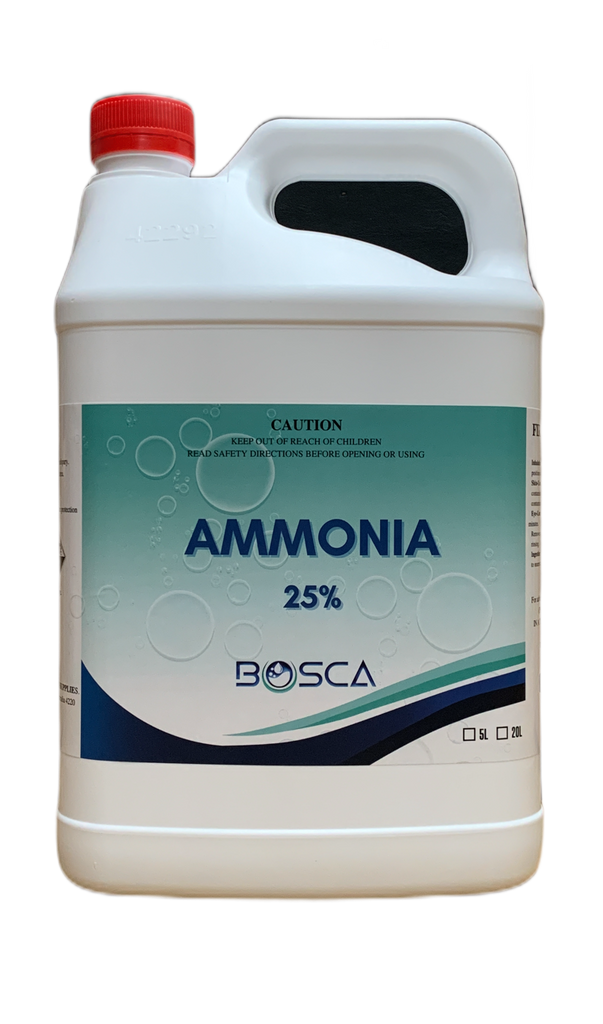Clear Ammonia Solution 25% 5L
data-product-type="Solvents" style="display: block;">Applications
Household cleaner
Diluted (1–3%) ammonia is also an ingredient of numerous cleaning agents, including many window cleaning formulas. Because aqueous ammonia is a gas dissolved in water, as the water evaporates from a window, the gas evaporates also, leaving the window streak-free.
In addition to use as an ingredient in cleansers with other cleansing ingredients, ammonia in water is also used as a cleaning agent by itself. Commonly available ammonia with soap added is known as “cloudy ammonia”.
Water treatment
Ammonia is used to produce monochloramine, which is used as a disinfectant. Chloramine is preferred over chlorination for its ability to remain active in stagnant water pipes longer, reducing the risk of waterborne infections.
Ammonia is used by aquarists for the purposes of setting up a new fish tank using an ammonia process called fishless cycling. This application requires that the ammonia contain no additives.
Food production
Baking ammonia (ammonium bicarbonate) was one of the original chemical leavening agents. It was obtained from deer antlers. It is useful as a leavening agent, because ammonium carbonate is heat activated. This characteristic allows bakers to avoid both yeast’s long proofing time and the quick CO2 dissipation of baking soda in making breads and cookies rise. It is still used to make ammonia cookies and other crisp baked goods,
Aqueous ammonia is used as an acidity regulator to bring down the acid levels in food. Its pH control abilities make it an effective antimicrobial agent.
Treatment of straw for cattle
Ammonia solution is used to treat straw, producing “ammoniated straw” making it more edible for cattle.
Laboratory use
Aqueous ammonia is used in traditional qualitative inorganic analysis as a complexant and base. Like many amines, it gives a deep blue coloration with copper(II) solutions. Ammonia solution can dissolve silver oxide residues, such as that formed from Tollens’ reagent. It is often found in solutions used to clean gold, silver, and platinum jewelry, but may have adverse effects on porous gem stones like opals and pearls.














